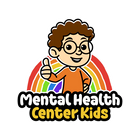A study published in the Journal of Attention Disorders looked at how often ADHD goes away in children, when it usually happens, and what makes it more likely.
Researchers asked parents whose kids had ADHD if their child still had it in a later survey. Only about 341 out of 4,580 kids were reported to no longer have ADHD. On average, this happened when the child was about 13 or 14 years old, which was over 5 years after they were first diagnosed.
Results showed that children with co-occurring mental health conditions, less severe ADHD symptoms, or access to behavioral therapy were more likely to experience remission.
Boys were less likely to experience remission from ADHD. Moreover, taking medication or having a special education plan did not greatly impact the chances of remission.
Most kids with ADHD still have it as teens, so it’s important for families to keep working with doctors and using beneficial treatments.
Understanding the Research
The researchers used data from the National Survey of Children’s Health, a large survey that includes a nationally representative group of children from ages 0 to 17.
They looked at answers from 4,580 parents who had reported in an earlier survey that their child had been diagnosed with ADHD. Later on, if those same parents said their child no longer had ADHD, that child was considered “remitted.” (Meaning, the child no longer met the criteria for an ADHD diagnosis.)
The researchers calculated the average age of these kids when remission was reported. They also looked at different factors to see which ones were connected to a higher chance of remission, such as:
- Whether the child had other disorders
- How severe their ADHD symptoms were
- If they had received behavioral or medication treatment
- If they had a special education plan
The results of the study revealed these important patterns:
- Kids who had less severe ADHD symptoms and those who had co-occurring mental health conditions were more likely to experience remission.
- Behavioral therapy also increased the chance of remission.
- On the other hand, boys were less likely to experience remission than girls.
- Interestingly, taking ADHD medication and having a special education or individualized education plan (IEP) were not linked to a higher chance of remission in this study.
- The average age of remission was about 13.84 years.
These findings tell us that ADHD can improve over time for some children, especially with the right support, although it usually remains a long-term condition. Alternatively, it may also suggest that some kids who have been diagnosed with ADHD might have been misdiagnosed to begin with.
Practical Strategies for Parents and Caregivers
This study is a reminder that children with an ADHD diagnosis benefit from steady, long-term care. Here are some helpful strategies to keep in mind:
Have regular ADHD follow-up visits
Think of routine visits as part of your child’s long-term plan, and not just a reaction to problems. According to Children and Adults with Attention-Deficit/Hyperactivity Disorder (CHADD), it would be good to schedule a visit with your child’s ADHD provider at least once per season — fall, winter, spring, and summer.
These routine visits help your child’s provider see that their symptoms are well-managed.
Prioritize behavioral strategies
Behavioral therapy teaches kids real-life skills they can use every day. These include managing frustration and staying organized. Look for therapists who teach practical skills and involve parents in the process, since consistent support at home helps those skills become second nature.
Adjust as your child grows
Keep in mind that as your child grows, their needs may change. Stay connected with your child’s care team — including their teachers, therapists, and healthcare providers — and don’t hesitate to try new tools that can help your child continue to thrive.
The study also suggests that true remission of ADHD by late adolescence is rare, which makes ongoing support important.
Try our ADHD worksheets to help your child or teen develop coping skills, manage everyday tasks, and improve emotional regulation at home and school.





















































